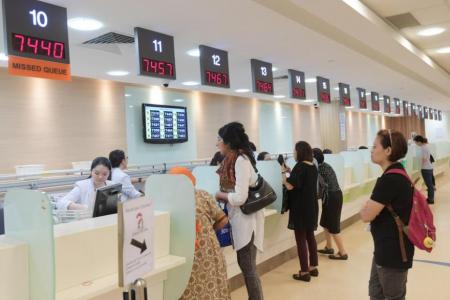What America can learn from Singapore's healthcare system
Replicating Singapore's system may not be the answer for the US
The New York Times recently ran the op-ed "Make America Singapore", where Ross Douthat points to Singapore's healthcare system as the example for America to follow.
He even goes to the extent of referring to Singapore's system as the "marvel of the wealthy world".
Singapore ranks No. 2 in the world for healthcare outcomes, according to The Economist Intelligence Unit (EIU), despite spending only 5 per cent of GDP on healthcare.
Its per capita spending on healthcare is only about 43 per cent of what America spends per person.
Mr Douthat focused his article on the principles and design of the healthcare system - which are very important.
However, there are at least two other reasons for Singapore's success.
First, the cost of healthcare itself is heavily subsidised and highly affordable.
The network of polyclinics and government hospitals provide good quality care at highly subsidised rates.
Subsidies range from 30-80 per cent of hospitalisation cost, and patients can choose the ward class, that is, the level of comfort and privacy of stay according to their willingness to pay.
This means that one can choose to forgo some creature comforts to get more value for money without compromising quality of care.
Means testing, where the payer's income and/or wealth is assessed to determine how much of the medical cost incurred will be paid for by the government, also ensures that most subsidies go to the less well-off.
So, right off the bat, Singaporeans pay much less for healthcare even before dipping into their Medisave savings.
Second, and more importantly, the Singapore healthcare system has been honed in place over decades.
The system itself has undergone changes over time.
Medishield Life, Eldershield and Medifund were subsequent introductions to cater to different demographic groups like the elderly and the needy who are unable to pay their medical bills after exhausting their Medisave and all other subsidies and aid.
Yet, the core design around Medisave and the principles of personal responsibility and prudent spending remain unchanged.
What does this mean for America?
Today, Americans are arguing over how to reform its healthcare system and what is the right set of legislation.
But when looking at the wide range of healthcare systems in the world, there is no perfect solution.
Whether it's the Affordable Care Act or the American Health Care Act or something in between, the priority is to agree on the core principles (and Americans must agree that healthcare is a basic right for all).
Then put a system in place and do the work to improve it over time and make it the right one for Americans.
Perhaps the US should stop looking for the Holy Grail and start working for its people.
The ball is in the US administration's court.
Sumit Agarwal is Visiting Professor of Finance at the National University of Singapore (NUS) Business School. Cheryl Lim is a PhD candidate in Finance at the EDHEC Business School. The opinions expressed are those of the writers and do not represent the views and opinions of NUS.
Get The New Paper on your phone with the free TNP app. Download from the Apple App Store or Google Play Store now


